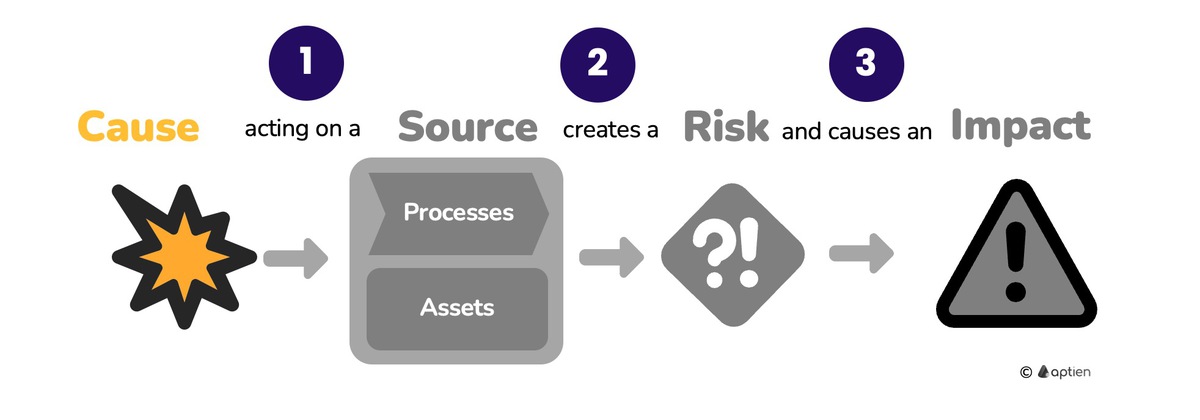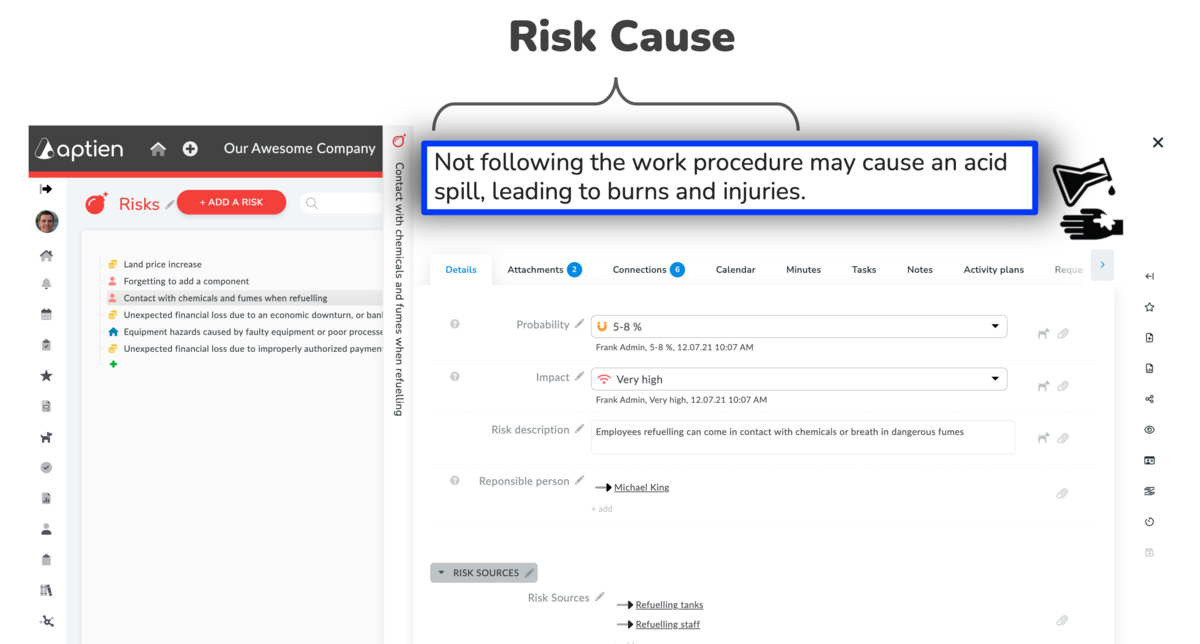Understanding Risk Causes in Simple Terms
- A cause is what triggers a risk
What Risk Causes Mean for Your Business
- To prevent risks, you need to identify, understand, and eliminate their underlying causes.
What is a Risk Cause?
- The underlying reason or event that can trigger a risk.
- It acts as a risk trigger, such as an event, action, or change in conditions that leads to a risky situation.
- Causes of risk include intentional harmful action, attack, natural disaster, technological failures, environmental factors, human error and the like
- Essentially, the cause of a risk is a threat or danger.
Difference Between Cause, Risk, and Impact
- Cause: The origin or underlying reason behind a potential risk. For example, "increasing cyber-attacks."
- Source: The process or asset involved.
- Risk: The potential event or situation that could occur due to the cause. For example, "customer data breach"
- Impact: The consequences or effects if the risk materializes. For example, "financial losses and reputational damage."
- Would you like more examples or further clarification on any of these elements?
Common Risks for Small and Medium Businesses (SMBs)
- Cyber Attacks: Data breaches and financial losses from online threats.
- Regulatory Changes: New laws and regulations affecting operations and compliance.
- Economic Downturns: Market fluctuations and recessions impacting sales and profitability.
- Operational Issues: Problems in daily business operations, like equipment failure or supply chain delays.
- Human Error: Employee mistakes or misconduct leading to operational or financial issues.
- Natural Disasters: Events like floods, fires, or storms damaging property and disrupting business.
- Technology Failures: Outdated or malfunctioning systems hindering business operations.
How to Identify the Cause of Risks in Your Risk Register
- Include the Cause in the Risk Description: Make sure the reason behind the risk is clearly part of its description.
- Provide a Brief Explanation: You can also add a short, concise explanation of the cause.
- Link to the Source: Connect the risk's cause to where it originates, such as a specific process or a company resource (e.g., technology, people).
Steps to Add a New Risk
- Open your Risk Register.
- Click "New Risk": Select the button to create a new risk entry.
- Enter Risk Details: Fill in the necessary information for the risk. This will add it to your risk register.
- Include the Cause: Following the guidance above, be sure to include the cause within the risk description.

